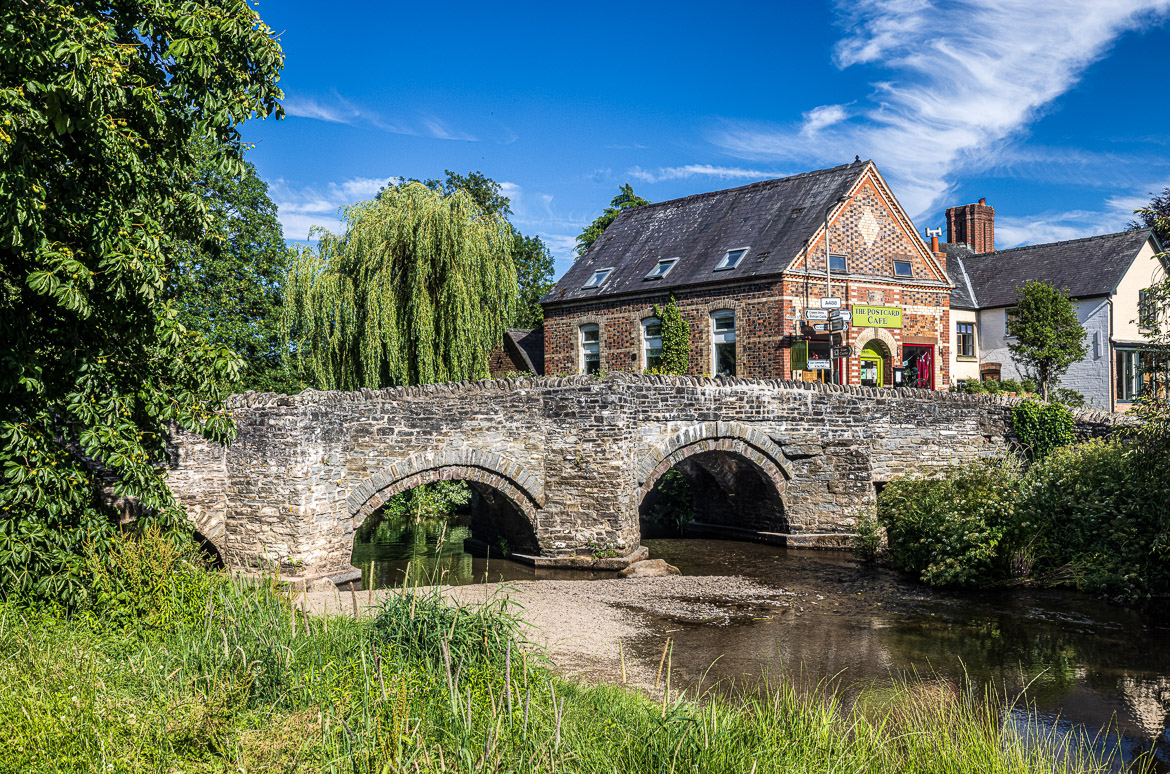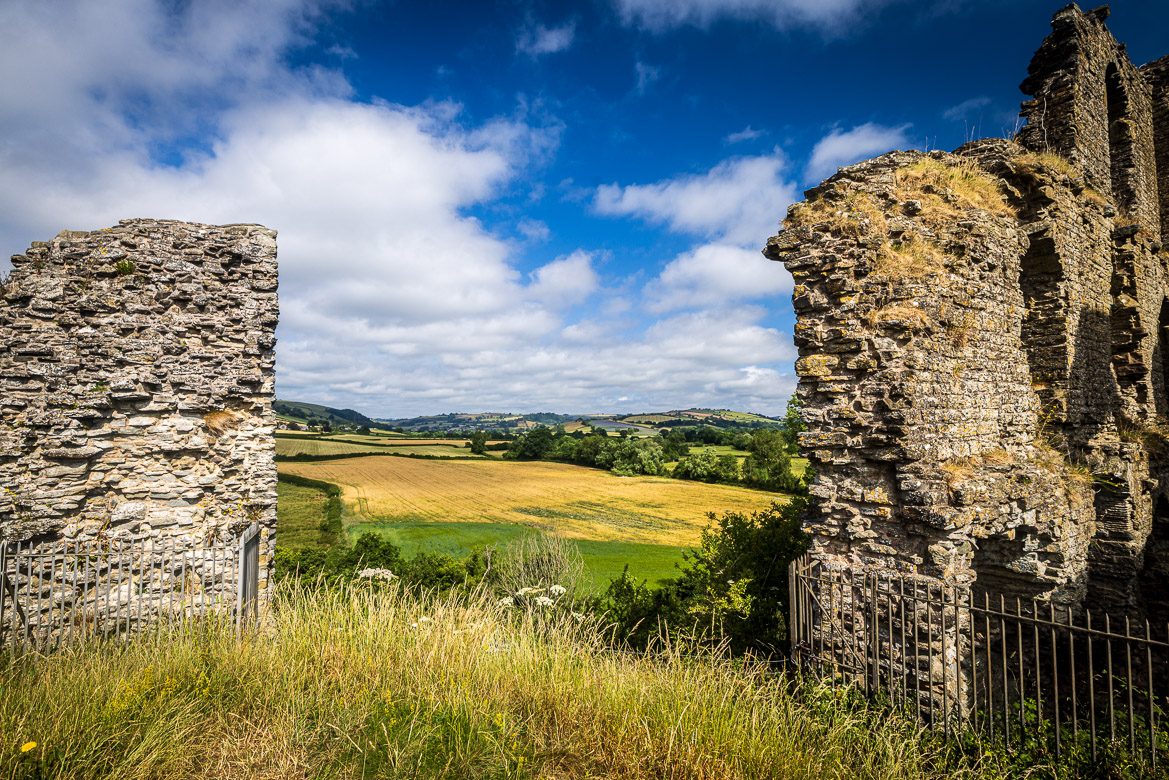
The Marches
The Welsh Marches are the border region between England and Wales. The word March comes from the Anglo-Saxon word “mearc” meaning mark or boundary.
After William the Conqueror’s conquest of England in 1066 he tried to establish control of the borderlands with Wales. He created Marcher Lordships granting large estates and substantial autonomy to Norman barons. And they build castles along their lands. The Marcher Lords ruled their territories with their own laws, sometimes distinct from the laws of England.
Over time the border fluctuated, but the term Marches came to denote not just the border but the entire border region. And a lot of trade took place between the English and the Welsh. Many a wool merchant made a fortune out of this trade and built their own castle-like estates like Stokesay Castle that I have described in another post.
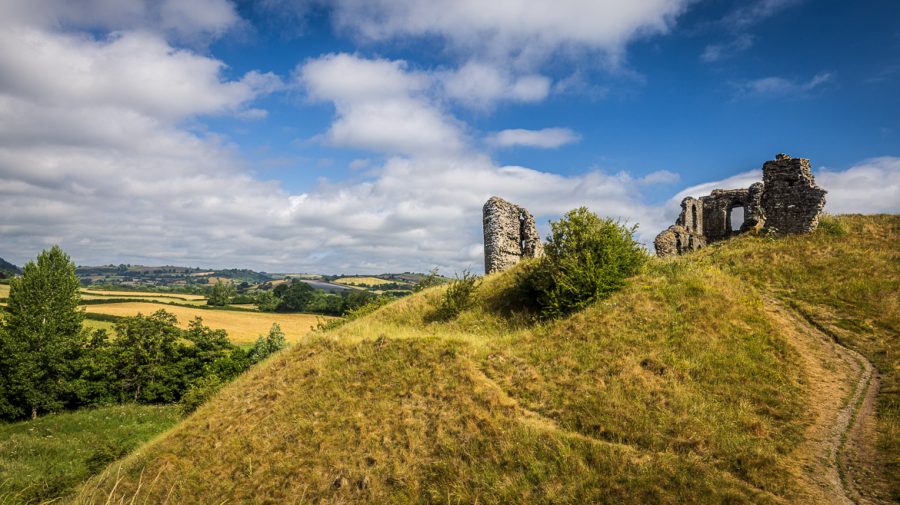
The Castles of the Marches
Motte and Bailey castles are very medieval. The motte is either a natural hill or more often an artificial raised earthwork. On top of the motte there would normally be a keep, a rectangular tower built for defence but where often the lord and lady would often live at the top floor, entertain in a Great Hall below and below at ground floor would be a storeroom.
The bailey was an enclosed courtyard below the motte. It could either surround the motte and keep or it could be lying to one side, separated from the motte by a ditch, crossed over by a bridge that could be raised.
The first castles were made of wood, but from the 11th or beginning of the 12th centuries they were built of stone. And as the technology developed, the fortifications became more advanced with additional moats or ditches, defensive towers, drawbridges, heavy gates that could be closed, murder holes and all kinds of pleasant defensive designs.
Due to the borderland disputes and fighting, the Welsh Marches are full of the ruins of these medieval castles. I have already photographed a little of the outside of Ludlow Castle. Future posts will describe Goodrich and Wigmore Castles, which both were substantial.
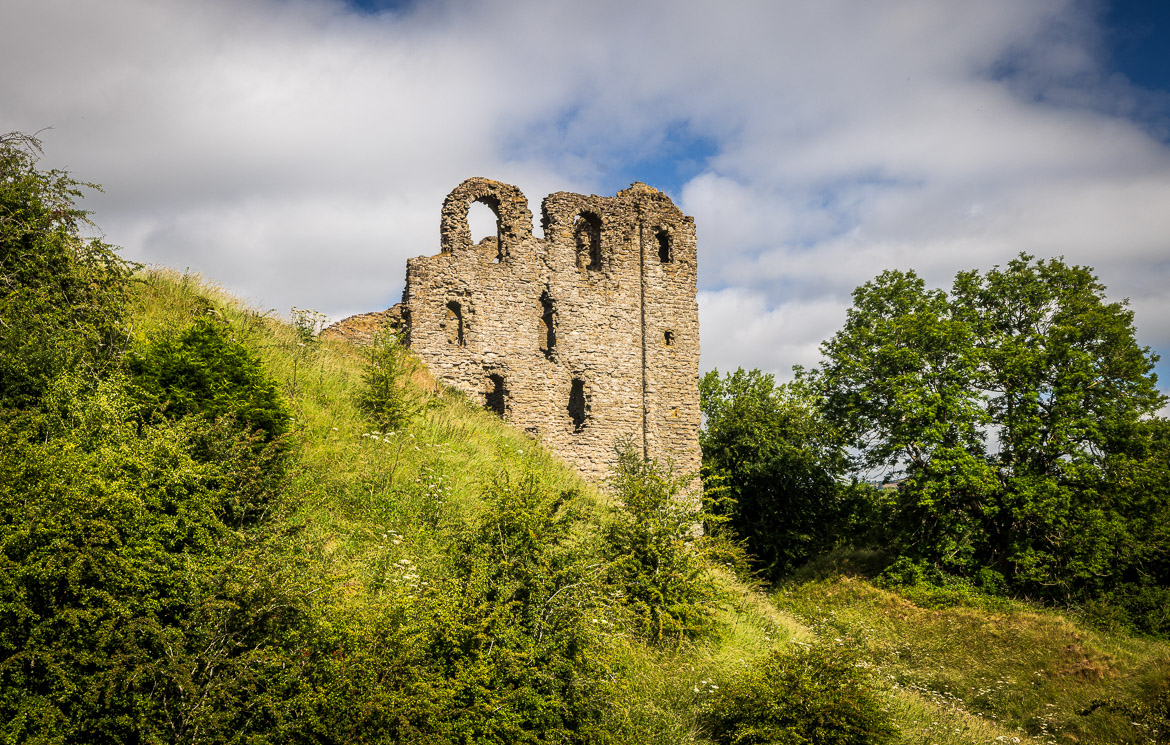
Clun Castle
I have illustrated this description by showing a few pictures from Clun Castle in Shropshire, 40 minutes north of my home in Eardisland. The original motte and bailey castle is from the 11th C, but the present keep was built in the 13th C. The castle’s keep is not placed on top of the motte but set aside, which is unusual.
The castle is situated at a bend in the river Clun providing protection from two sides. The bailey was at one side of the moat and has now been converted to the town’s bowling ground.
The castle has been attacked many times. Rhys, a prince of South Wales, captured the castle in 1196 and burned it down. In 1215 the lord of the castle, John Fitzalan joined a repellion against King John (the same King John as Robin Hood was fighting against) and King John sent troops to attack the castle. And in 1233 the castle withstood a siege by Llewellyn of Wales. And in the early 15thC Owain Glyn Dwr, who proclaimed himself Prince of Wales, attacked the area around Clun with devastating results for the castle. A hundred year later (1539) the writer Leland reported that the castle was ruinous.
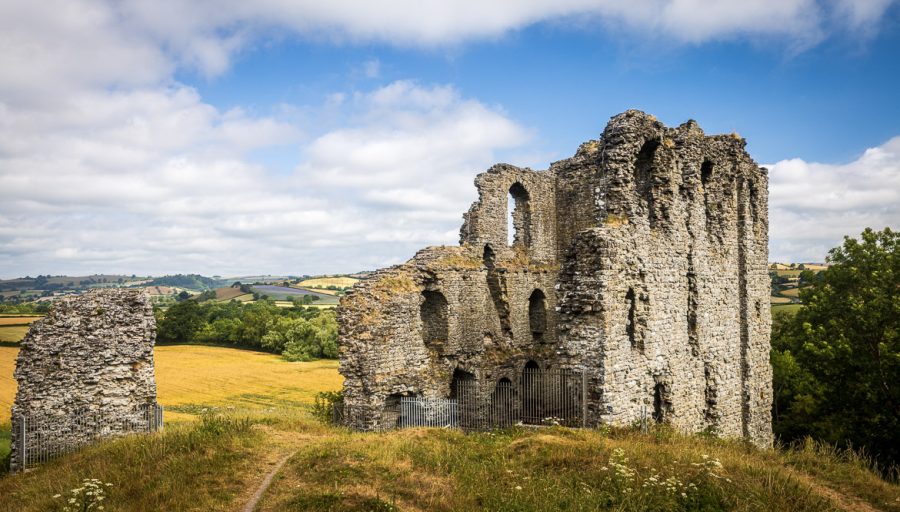
Future posts will describe Goodrich Castle and Wigmore Castle and more ruinous castles like Longtown Castle. And older motte and bailey castles, now mainly demolished, are described in my posts about Eardisland, Pembridge, Lyonshall and Kilpeck among others
